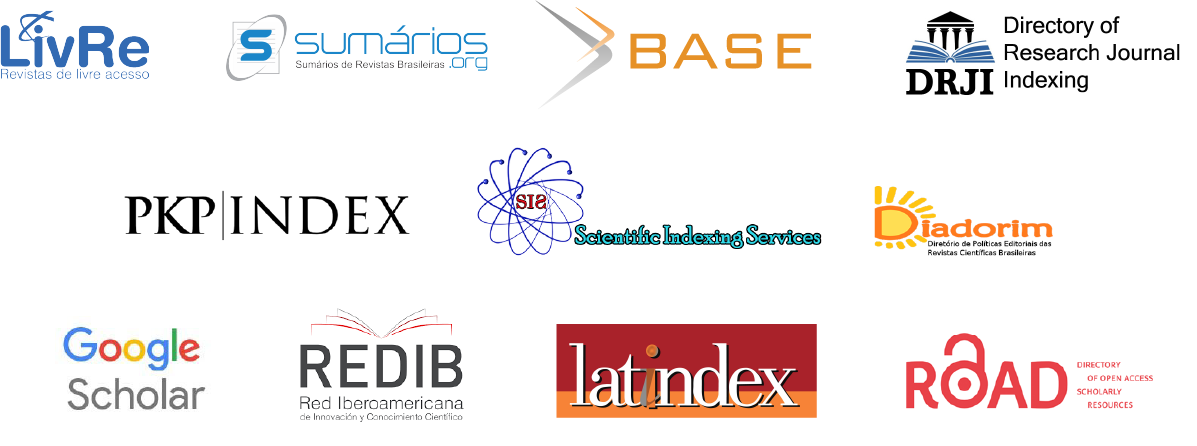Submissions
Submission Preparation Checklist
As part of the submission process, authors are required to check off their submission's compliance with all of the following items, and submissions may be returned to authors that do not adhere to these guidelines.-
The submission has not been previously published, nor is it before another journal for consideration (or an explanation has been provided in Comments to the Editor).
-
The submission follows the guidelines for author profile completion at the time of manuscript submission, providing the required information in the supplementary document.
-
The submission must include, in addition to the article/visual essay/review, the supplementary document.
- The work must undergo professional proofreading for spelling and compliance with ABNT [6023:2018] standards before being submitted.
-
The submission file is in Microsoft Word, OpenOffice, or RTF format (doc./docx).
-
Whenever possible, provide URLs for the references used.
-
The text must follow the formatting guidelines provided below, according to the submission type: article, visual essay, or review. Submissions in the format of a thesis, internship/research report, narrative, etc., should be adapted to the desired publication format: article, visual essay, or review.
-
The work discusses results, studies, or reflections on university extension activities and their relationship with research and teaching; culture and related areas; education and the teaching-learning process.
-
The work should have a maximum of 5 authors. Starting in 2019, at least one must have a master's or doctoral degree in Visual Essays or Reviews. For articles, at least one author must hold a doctoral degree.
-
Each author is allowed to publish 02 (two) papers per year.
-
Revista UFG does not charge any type of fee and follows the CC BY license guidelines.
-
The RevistaUFG Journal submits all works to plagiarism detection software, the Crossref Similarity Check.
-
The evaluation is performed by the double-blind system of Ad Hoc reviewers and members of the Scientific Editorial Board. In case of discrepancy or divergence, a third reviewer will be consulted.
- All submissions to the UFG Journal are subject to translation into English and Spanish. After approval for publication, the possibility of translation will be assessed, and if positive, the foreign language translations will be published in the future. The publication of the article in its original language takes precedence and will not be affected by delays in translation.
Dossier: Rural Education, Indigenous Education and Quilombola Education: paths of resistance and (dis)encounters with new and other narratives
This Dossier consists of a space for decolonial reflections and debates as possible ways of problematizing history, anthropology, sociology and the most diverse educational fields, grounded in the specificities of the peoples of rural, riverside and forest areas, indigenous and quilombola communities. The purpose is to create a space for study and reflection on problematizing, critical and empowering teaching proposals for the formation of critical and emancipatory consciousness. Based on these questions, we intend to gather teachers, students, and researchers to share and reflect together on teaching experiences, research, teaching practices and extension actions. We aim to broaden the theoretical, practical and methodological discussions that reflect on teaching in the most diverse fields of knowledge and their interfaces with rural, indigenous and quilombola education, as well as those that involve interculturality, sensitive backgrounds, teaching practices, teacher training and educational experiences. Finally, this Dossier hopes to be configured as a space for problematizing studies that encourage debate on conceptual, methodological and dialogical perspectives that contribute to understanding the place and protagonism of these communities in the historical and social constitution of Brazilian education.
Period for submissions: From May 20, 2024 to August 31, 2024.
Dossier Learning in Teaching Processes with Research: Problematizing meta-themes and complex thinking
O presente Dossiê visa publicar artigos do campo didático que tem por objeto de estudo o ensino contextualizado e sua relação com a ensinagem, ou seja, um ensino que gere aprendizagem. Adota-se o desafio de um ensino problematizador, participativo e dialógico, no qual estudantes problematizem a realidade, selecionem metatemas e busquem pensar complexo, religando conhecimento a fim de aprofundar compreensão, sensibilidade e consciência sobre o tema em estudo por meio de uma razão sensível.
Copyright Notice
Revista UFG uses the Creative Commons CC-BY (4.0) - Attribution 4.0 International license for open access journals (Open Archives Initiative - OAI) as a basis for transferring rights.
Authors who publish in this journal agree to the following terms:
1) Authors may distribute, remix, adapt and build upon their work, even for commercial purposes, as long as they give UFG proper credit for the original creation. Authors may copy and redistribute the material in any medium or format.
2) Authors are allowed and encouraged to publish and distribute their work online (e.g., in institutional repositories or on their personal page) at any point before or during the editorial process, provided that reference is made to the place of publication origin, that is, the electronic address/reference of Revista UFG.
3) The authors of works published in Revista UFG are expressly responsible for their content.
4) All works submitted to Revista UFG that have images, photographs, figures in their body must be accompanied by a term of assignment of copyright of the author, of the participating member of the image and, in the case of children, of the relatives of the exposed children , with their data and signature.
Access the IMAGE USE AUTHORIZATION TERM document through this link.
Privacy Statement
The names and email addresses entered in this journal site will be used exclusively for the stated purposes of this journal and will not be made available for any other purpose or to any other party.









